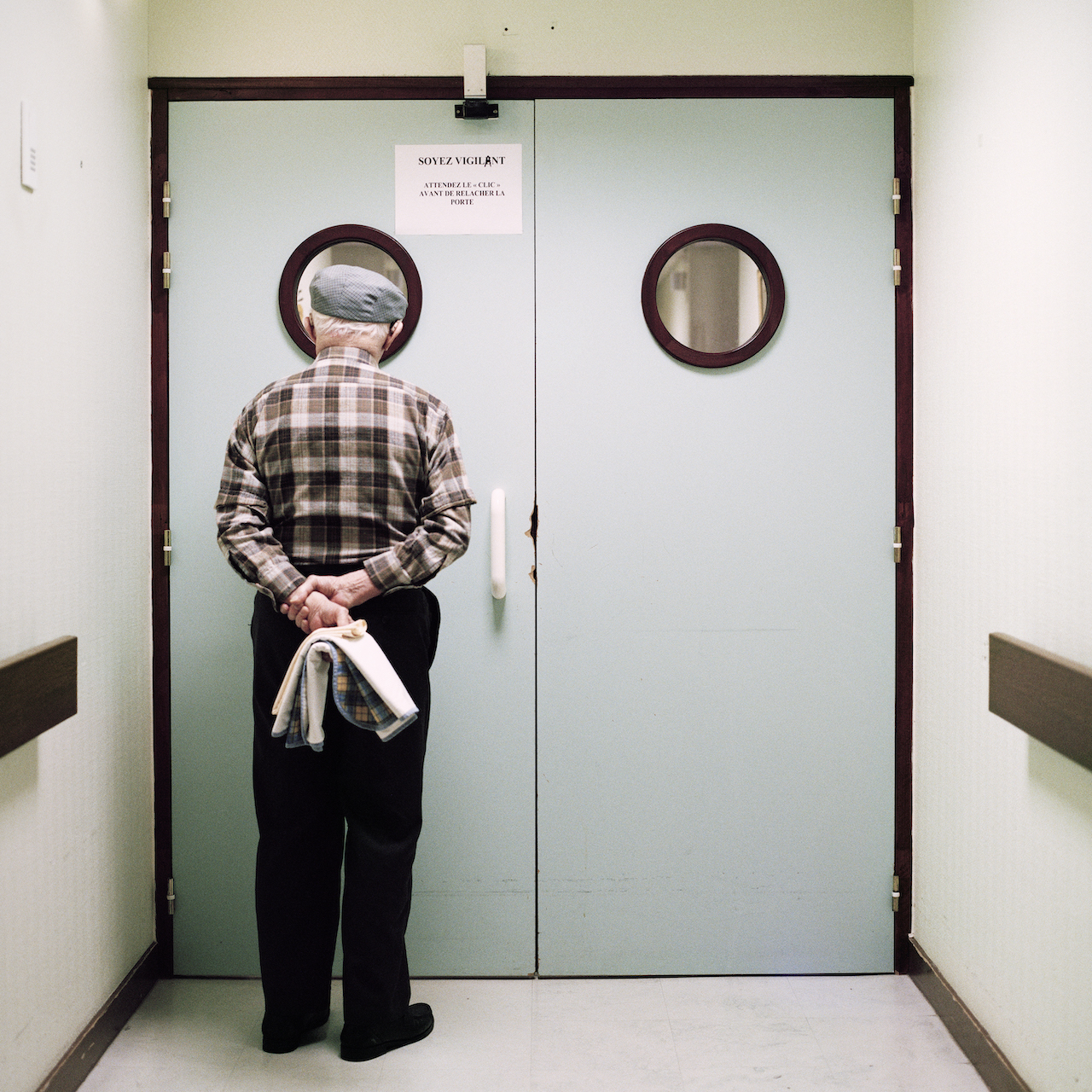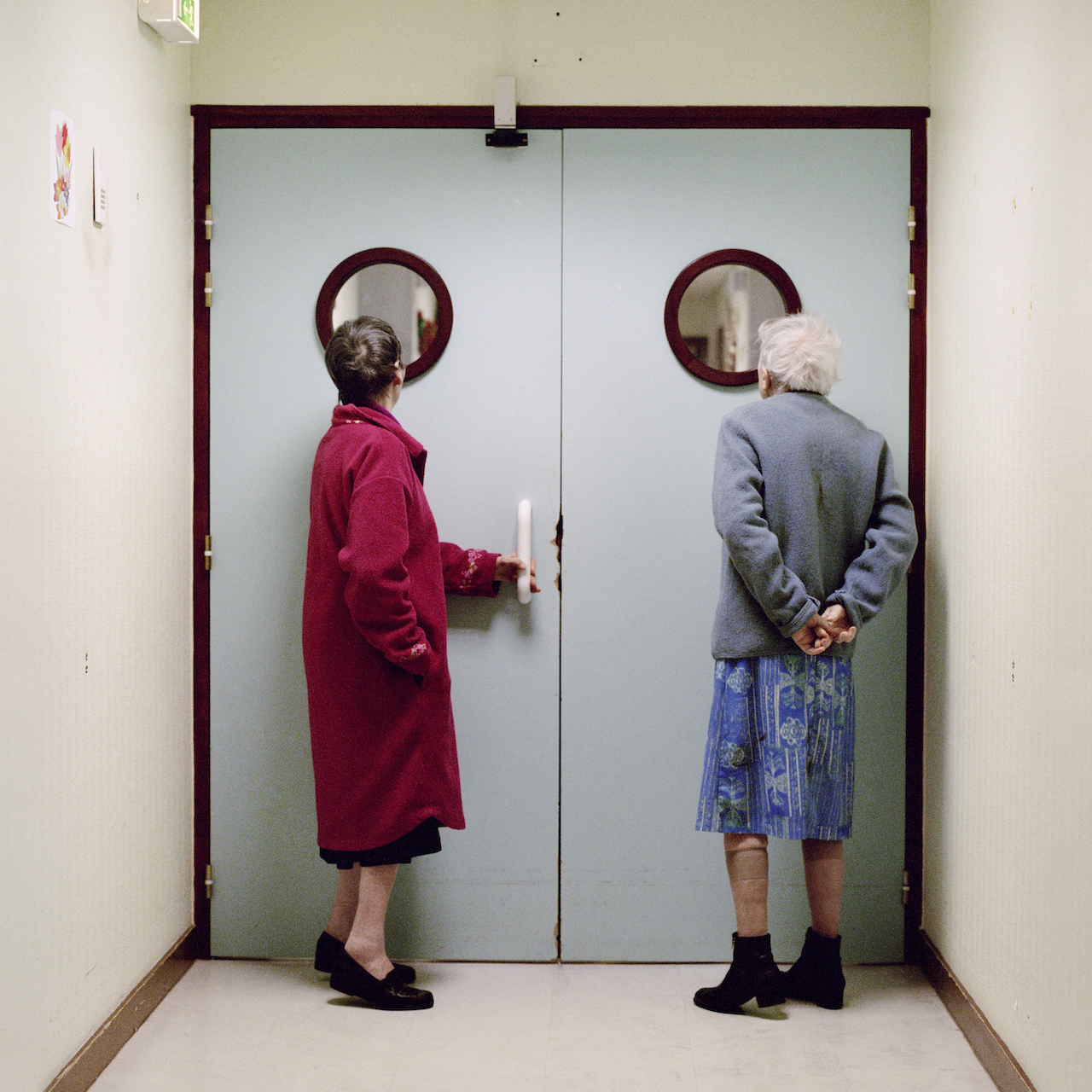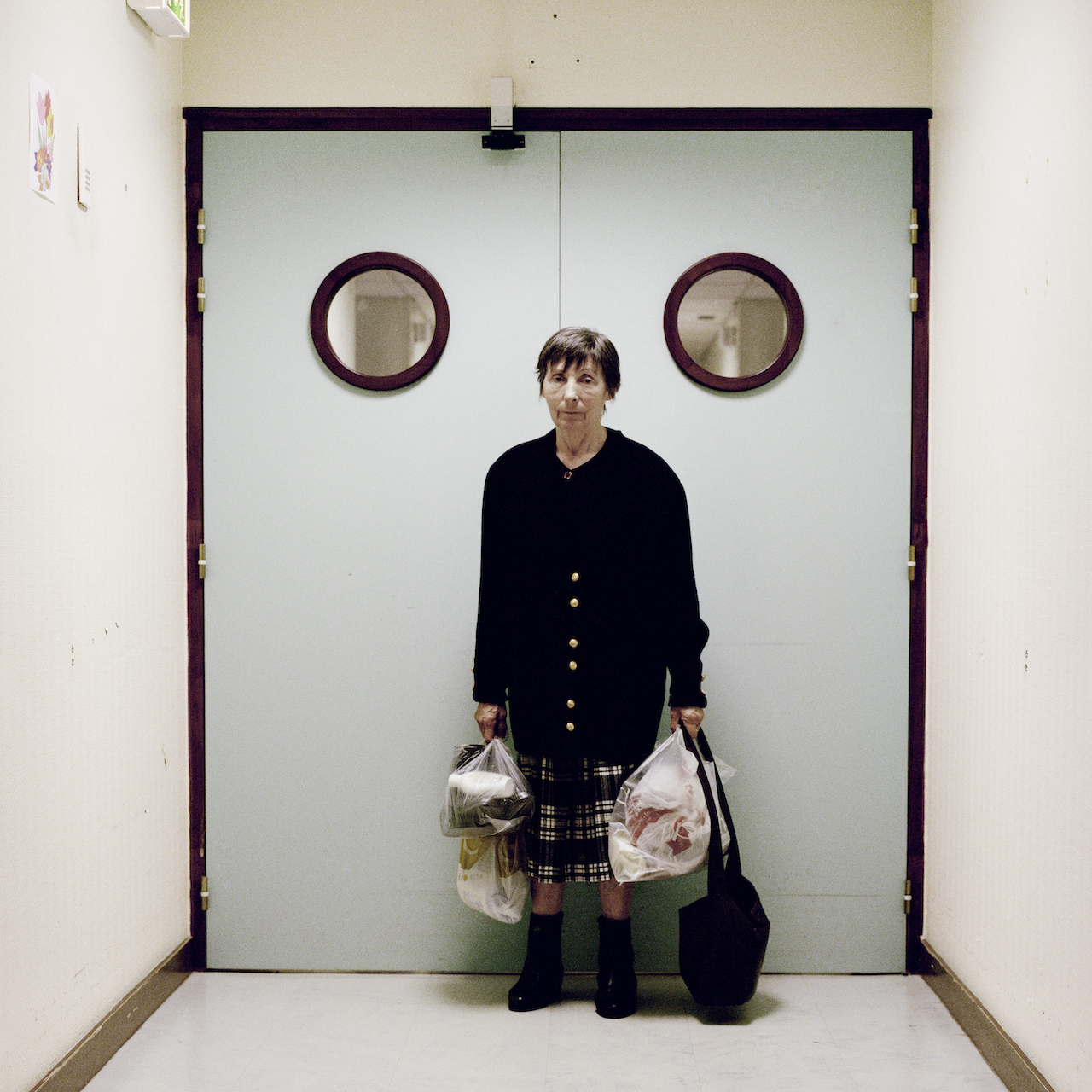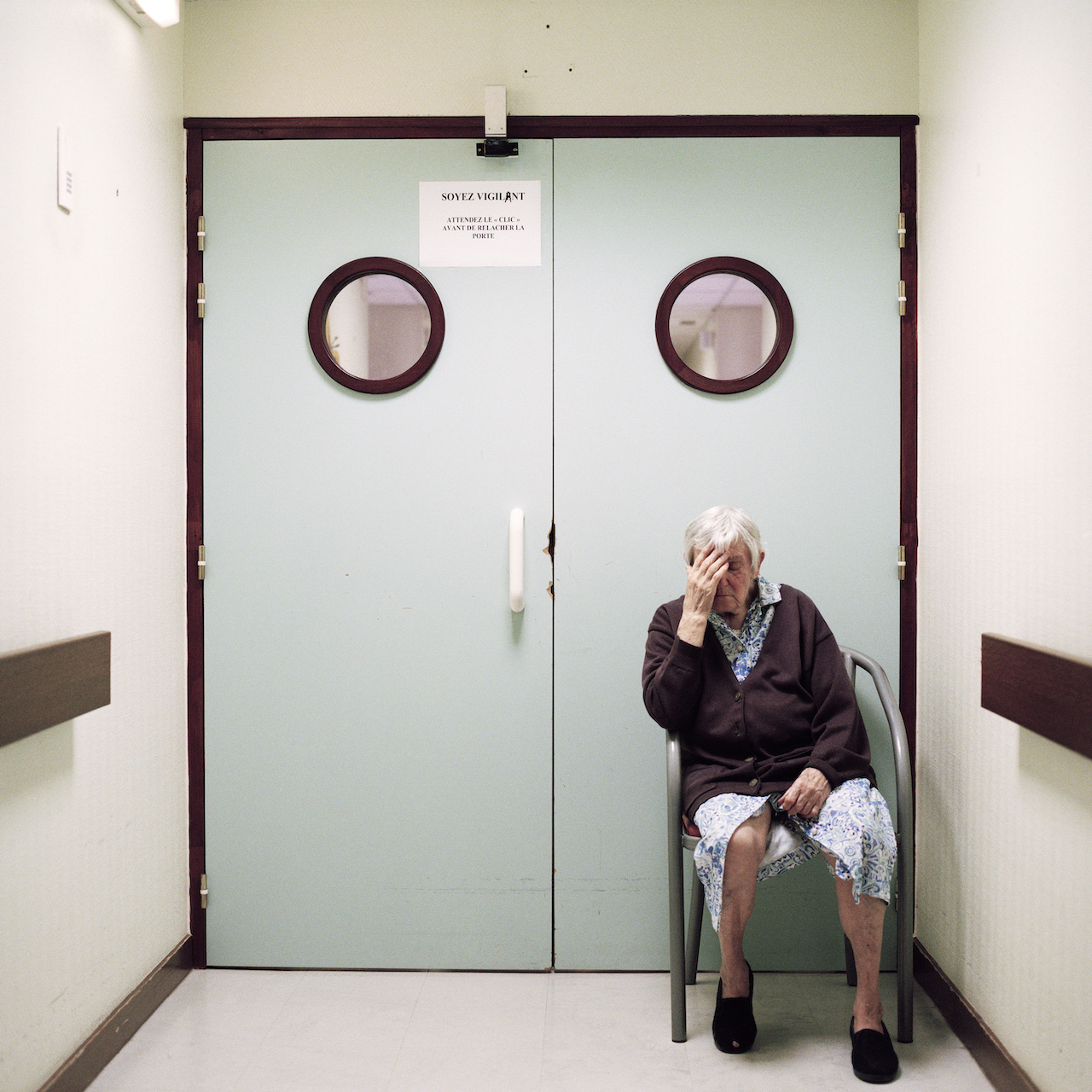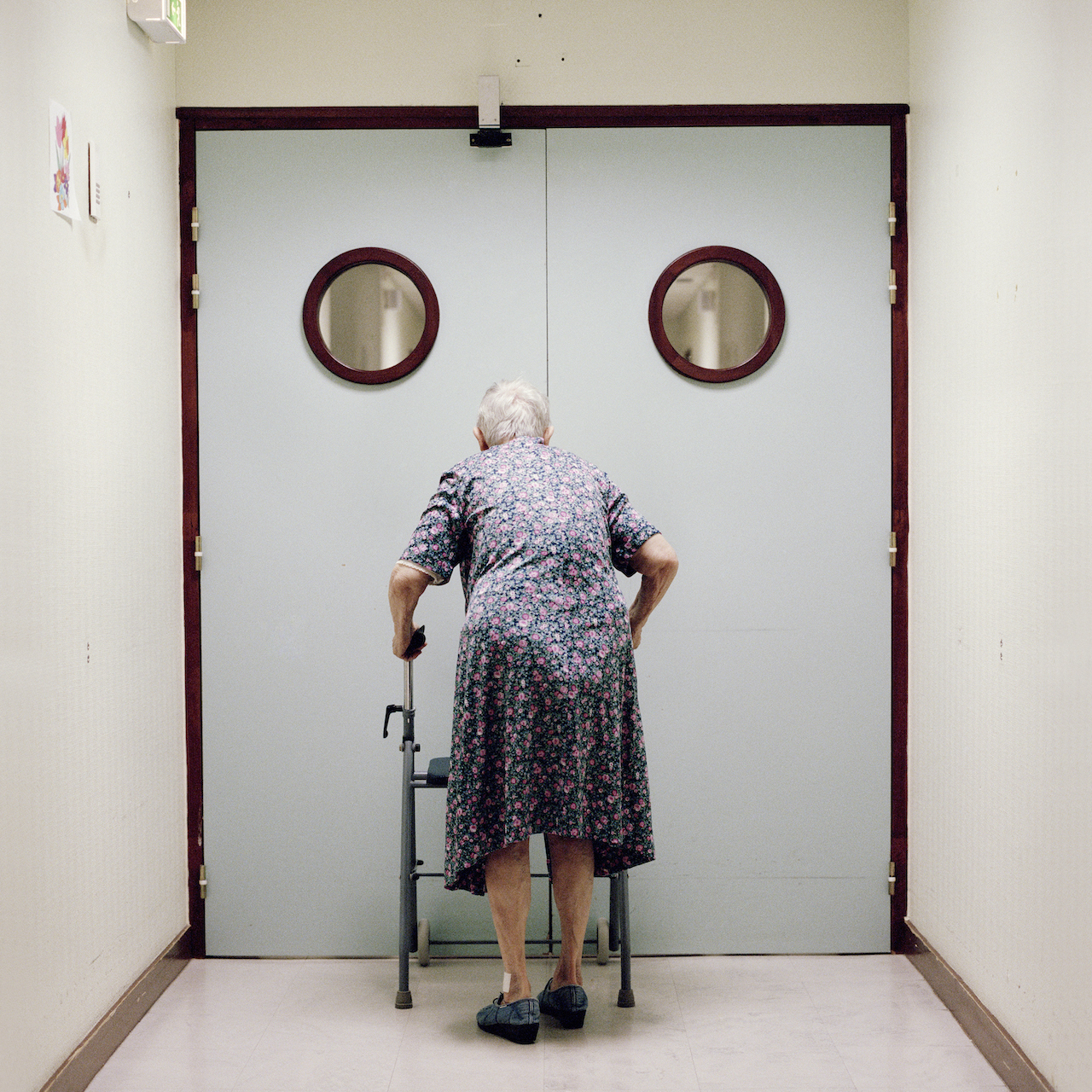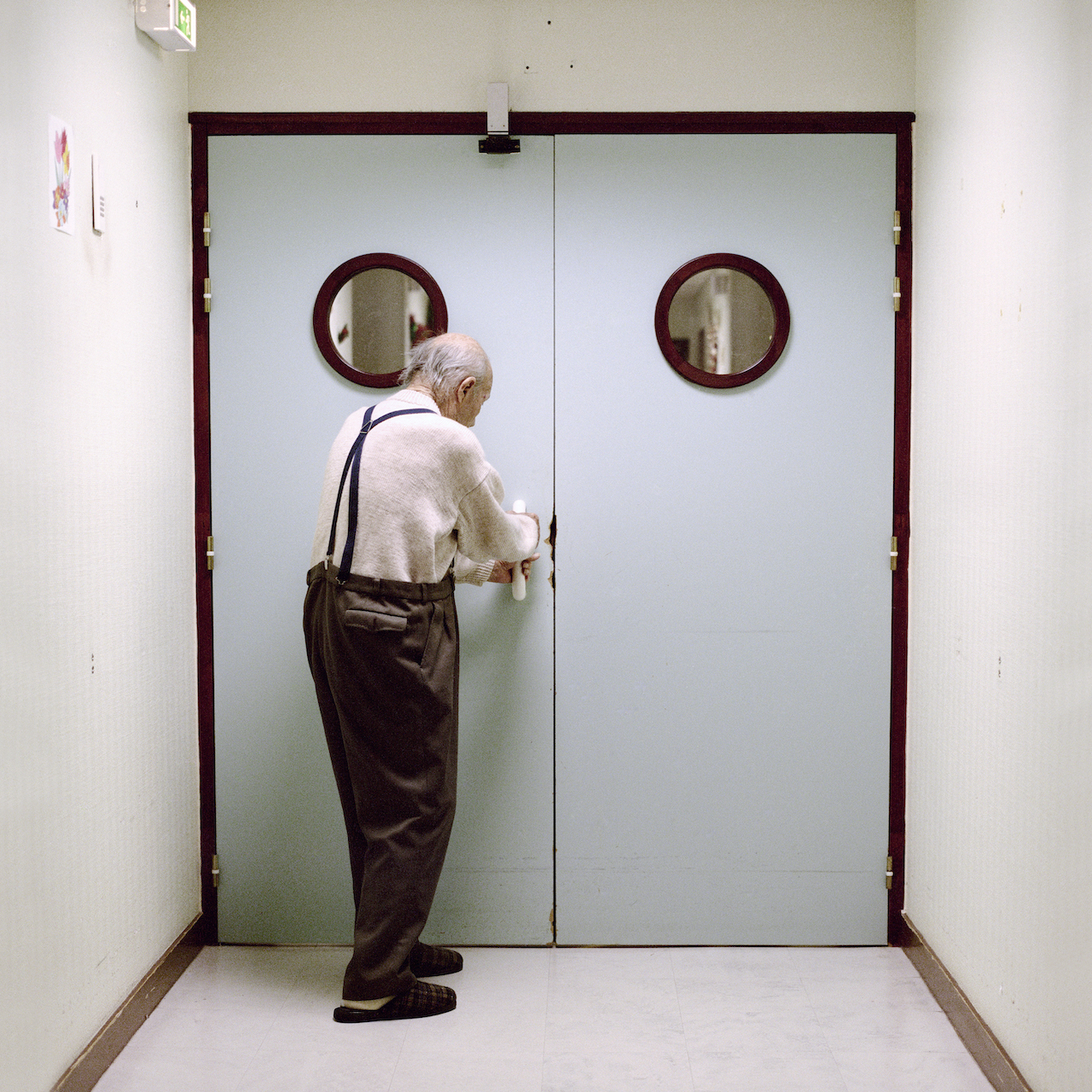This World Alzheimer’s Day, Maja Daniels reflects on her desire to capture a realistic and tender depiction of ageing and memory loss
An elderly man stands squarely in front of a blue door, clad in a brown checked shirt and grey flat cap. Captured from behind, his hands are neatly tucked behind him, clasping a blanket or cloth of some sort. He gazes into a porthole, searching for the secrets it might reveal as if it is a portal to another world.
The image in question [above] is not definitive: it deliberately elicits more questions than answers. Part of a study on ageing and the institutions that cater for the elderly, it is a response to a difficult question: how can photography depict Alzheimer’s disease in a multifaceted and realistic way? The image is part of Into Oblivion (2007-2010), a three year project by Swedish photographer Maja Daniels that documents the daily lives of Alzheimer’s patients in a French hospital.
In 2007, Daniels was contacted by a director of a geriatric hospital who wanted photographers and artists to make work in his institution. Describing that initial call as “weird and wonderful”, Daniels visited the facility a year later. For ethical purposes, she declined to give its official title. “I don’t want this series to be about a specific hospital. It’s much more of a broader commentary,” Daniels explains. “This is [about] a care policy that’s implicated throughout Europe and it’s an attitude that is implemented throughout the Western world, so I could have done it in any hospital. It just so happened that this place opened up to me in a way that was just remarkable.”
It was during her first tour of that hospital that Daniels noticed a set of doors walled off from the rest of the building. Two people were standing behind them, waving at her through portholes. Staff explained that it was a protective unit for patients suffering with dementia and Alzheimer’s disease, therefore the door was locked to prevent them from getting lost or into trouble.
“[Immediately] I just thought, yeah, that’s it,” Daniels says. “It was very clear to me from that moment that that was a significant and symbolic image, and that I wanted to work with that as a way of telling a story.” Daniels stayed in the hospital for five days to a week every month, becoming familiar with every aspect of the institution, assisting staff members with routine jobs like waking residents or serving them breakfast.
Capturing her subjects, however, was far from easy. Daniels spent hours with Alzheimer’s patients, striving to represent their plight in a dignified way, but she was also struck by the fact that many were not fully cognisant of her presence. There were legal challenges as well. Clearing authorisations with the hospital and family members took nearly two years.
“Even when you’re trying to be very philosophical, or just trying to make a point, you still deal with real people with family members,” Daniels says. “They have sons and daughters, nephews and nieces and granddaughters, and they are much loved. And, of course, I had to spend a lot of time getting to know their families.
“It’s [also] not a given to photograph someone who might give their consent in the moment, but who might not remember you in two minutes,” Daniels adds. “So that was something that I struggled with. And the only way I could overcome that was to get consent.”
Using a Bronica 6×6 camera “with a very noisy wind-on motor”, Daniels was heavily influenced by Paul Graham’s work Beyond Caring, which captured British dole offices in the mid-80s. Just as Graham eschewed the then popular trend of colourless portraiture, Daniels resisted “stark and dark” depictions that were used to document geriatric institutions in the past.
The loud clunky motor on the camera itself was also instructive, with residents responding to it in dynamic and surprising ways. One man who had had a keen interest in photography would say “there’s the Kodak” whenever he heard the motor whirring.
“I didn’t want it to be discreet, I wanted the opposite of that,” Daniels says. “The camera was just so noisy, and chunky. It had that kind of sound every time I took a picture which caused a bit of a stir, which was good, because that’s what was needed.”
Over the course of the three years, Daniels also became something of a carer herself, transporting patients who had become preoccupied with the door back to the familiar confines of their wards. For the same reason it was important that the camera “be with” the patients on their side of the door. Rather than framing their lived experience as one of entrapment, Daniels’ images reject that easy trope, instead focusing on life spent within this specialised unit.
“It became a way to justify my presence, the fact that I was trying to help in some way, just being a voluntary person who was there,” Daniels says. “There wasn’t even permanent staff in that unit. So they were left to themselves a lot of the time.”
In 2016, the series was awarded the Bob and Diane Fund, a $5,000 grant for visual storytelling about Alzheimer’s disease and dementia. “It’s very hard to document Alzheimer’s disease,” said charity founder Gina Martin. “I think people will find [Maja’s] work to be very smart, fresh and modern.”
“Our societies are so strongly ruled by a youth imperative. But if you are old and you’ve lived your life, and you no longer serve any production line, you are more easily disposable. And that is, for me, a horrible way of considering human life”
Ultimately, Daniels does not see the images as a critique of hospitals or carers, but an examination of “our institutionalised way of living which protects us from seeing certain things”. It is a project that has only acquired greater relevance due to shifting demographics. With an expanding population of elderly people across Europe, caused by falling birth rates and longer life expectancy, more elderly patients need access to specialised care than ever before. With these rates only set to increase, the potential strain that will inflict on public health services is a challenge policy makers are struggling to overcome.
As Maja points out, the policies in question – which commonly involve shutting the elderly off from society in care homes and palliative wards – also reflect broader attitudes to aging and dying. In fact, they say a great deal about how society ranks people according to their output, rather than their humanity.
“Our societies are so strongly ruled by a youth imperative. It’s related to production value. If you’re useful in some way you have more importance,” Daniels says. “But if you are old and you’ve lived your life, and you no longer serve any production line, you are more easily disposable. And that is, for me, a horrible way of considering human life.”

